Transforming variables
Introduction to Regression with statsmodels in Python

Maarten Van den Broeck
Content Developer at DataCamp
Perch dataset
perch = fish[fish["species"] == "Perch"]
print(perch.head())
species mass_g length_cm
55 Perch 5.9 7.5
56 Perch 32.0 12.5
57 Perch 40.0 13.8
58 Perch 51.5 15.0
59 Perch 70.0 15.7
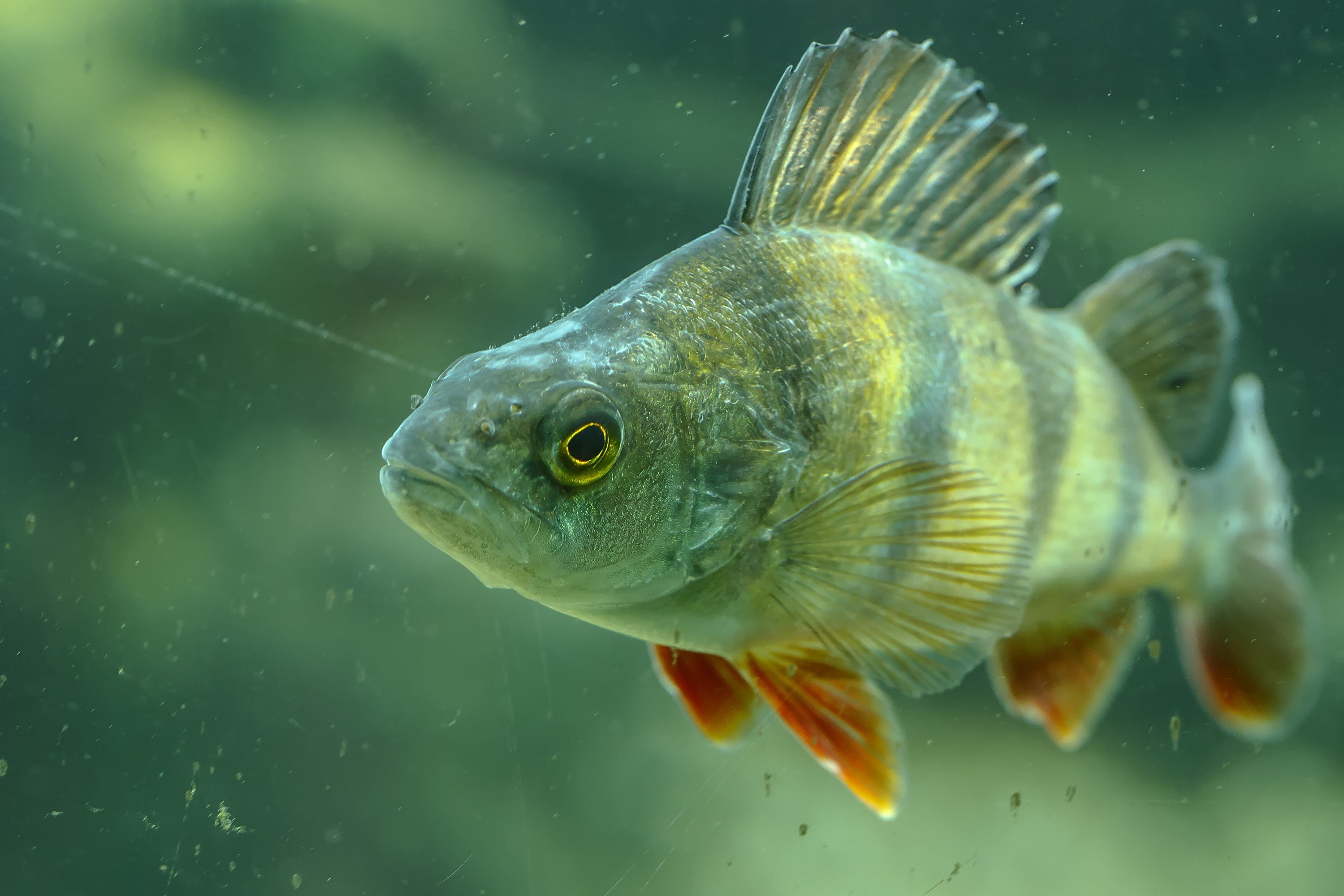
It's not a linear relationship
sns.regplot(x="length_cm",
y="mass_g",
data=perch,
ci=None)
plt.show()
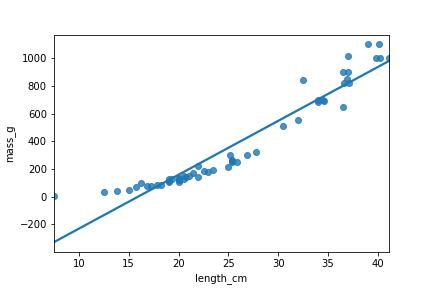
Bream vs. perch
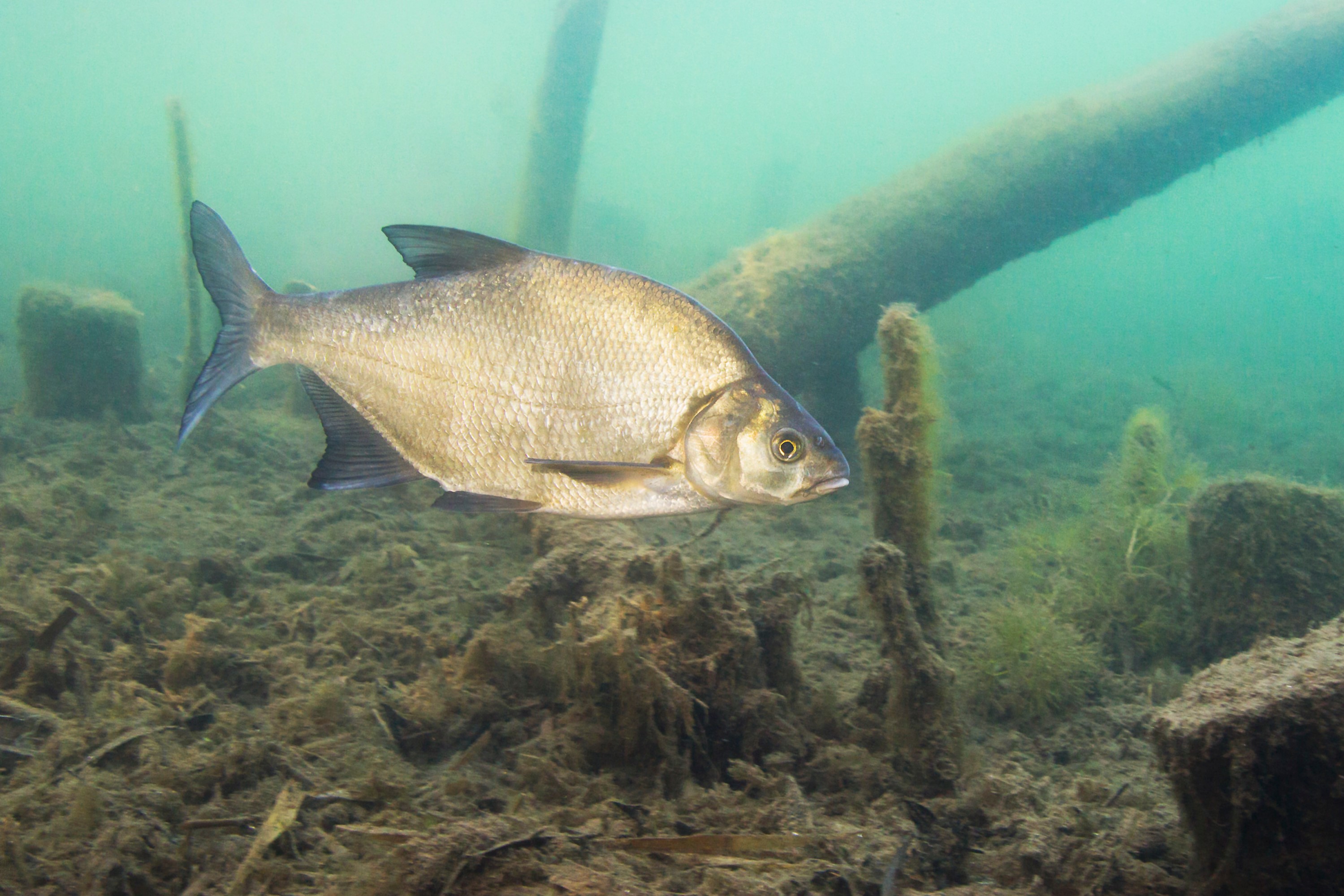

Plotting mass vs. length cubed
perch["length_cm_cubed"] = perch["length_cm"] ** 3
sns.regplot(x="length_cm_cubed",
y="mass_g",
data=perch,
ci=None)
plt.show()
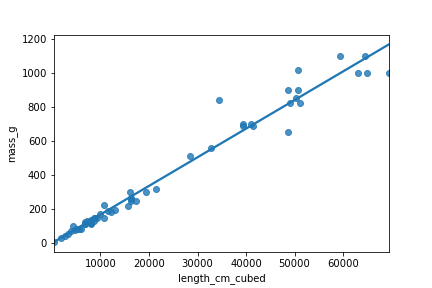
Modeling mass vs. length cubed
perch["length_cm_cubed"] = perch["length_cm"] ** 3
mdl_perch = ols("mass_g ~ length_cm_cubed", data=perch).fit()
mdl_perch.params
Intercept -0.117478
length_cm_cubed 0.016796
dtype: float64
Predicting mass vs. length cubed
explanatory_data = pd.DataFrame({"length_cm_cubed": np.arange(10, 41, 5) ** 3,
"length_cm": np.arange(10, 41, 5)})
prediction_data = explanatory_data.assign(
mass_g=mdl_perch.predict(explanatory_data))
print(prediction_data)
length_cm_cubed length_cm mass_g
0 1000 10 16.678135
1 3375 15 56.567717
2 8000 20 134.247429
3 15625 25 262.313982
4 27000 30 453.364084
5 42875 35 719.994447
6 64000 40 1074.801781
Plotting mass vs. length cubed
fig = plt.figure()
sns.regplot(x="length_cm_cubed", y="mass_g",
data=perch, ci=None)
sns.scatterplot(data=prediction_data,
x="length_cm_cubed", y="mass_g",
color="red", marker="s")
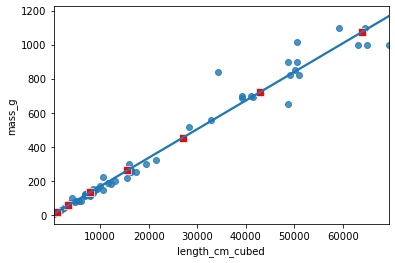
fig = plt.figure()
sns.regplot(x="length_cm", y="mass_g",
data=perch, ci=None)
sns.scatterplot(data=prediction_data,
x="length_cm", y="mass_g",
color="red", marker="s")
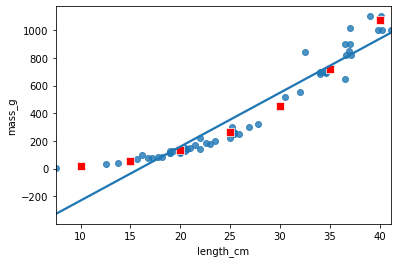
Facebook advertising dataset
How advertising works
- Pay Facebook to shows ads.
- People see the ads ("impressions").
- Some people who see it, click it.
- 936 rows
- Each row represents 1 advert
| spent_usd | n_impressions | n_clicks |
|---|---|---|
| 1.43 | 7350 | 1 |
| 1.82 | 17861 | 2 |
| 1.25 | 4259 | 1 |
| 1.29 | 4133 | 1 |
| 4.77 | 15615 | 3 |
| ... | ... | ... |
Plot is cramped
sns.regplot(x="spent_usd",
y="n_impressions",
data=ad_conversion,
ci=None)
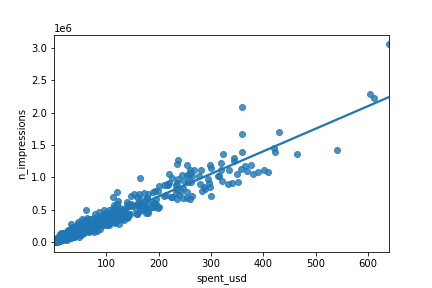
Square root vs square root
ad_conversion["sqrt_spent_usd"] = np.sqrt(
ad_conversion["spent_usd"])
ad_conversion["sqrt_n_impressions"] = np.sqrt(
ad_conversion["n_impressions"])
sns.regplot(x="sqrt_spent_usd",
y="sqrt_n_impressions",
data=ad_conversion,
ci=None)
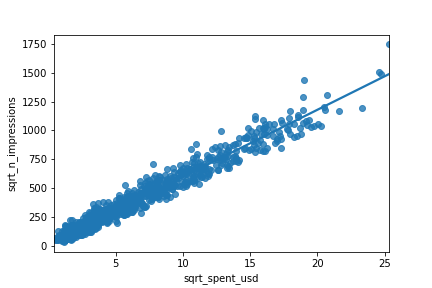
Modeling and predicting
mdl_ad = ols("sqrt_n_impressions ~ sqrt_spent_usd", data=ad_conversion).fit()
explanatory_data = pd.DataFrame({"sqrt_spent_usd": np.sqrt(np.arange(0, 601, 100)),
"spent_usd": np.arange(0, 601, 100)})
prediction_data = explanatory_data.assign(sqrt_n_impressions=mdl_ad.predict(explanatory_data),
n_impressions=mdl_ad.predict(explanatory_data) ** 2)
print(prediction_data)
sqrt_spent_usd spent_usd sqrt_n_impressions n_impressions
0 0.000000 0 15.319713 2.346936e+02
1 10.000000 100 597.736582 3.572890e+05
2 14.142136 200 838.981547 7.038900e+05
3 17.320508 300 1024.095320 1.048771e+06
4 20.000000 400 1180.153450 1.392762e+06
5 22.360680 500 1317.643422 1.736184e+06
6 24.494897 600 1441.943858 2.079202e+06
Let's practice!
Introduction to Regression with statsmodels in Python

